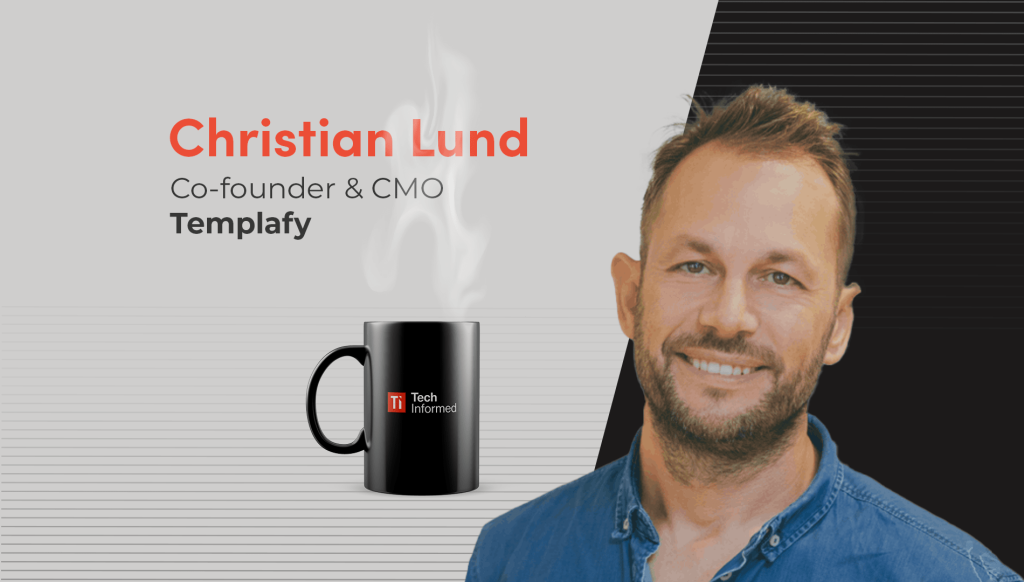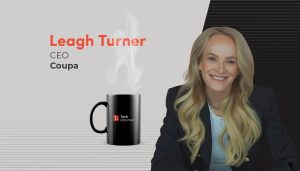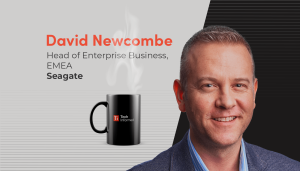

A coffee with… Christian Lund, co-founder & CMO, Templafy
Copenhagen-born Christian Lund, with a background in political science, began his business career in newspaper media sales, steadily rising through the ranks before making the leap into tech entrepreneurship. Twelve years ago, he co-founded Templafy,…
Copenhagen-born Christian Lund, with a background in political science, began his business career in newspaper media sales, steadily rising through the ranks before making the leap into tech entrepreneurship.
Twelve years ago, he co-founded Templafy, a document generation platform aimed at improving productivity for enterprise clients.
The Danish start-up has grown alongside the shifts in cloud migration and generative AI, providing businesses with solutions to streamline document creation.
The company’s SaaS platform integrates with tools like Microsoft Office, Google Workspace, and Salesforce, and is now used by over 800 enterprises worldwide.
Templafy claims to save employees an average of 30 days per year by automating document workflows, boosting productivity across industries.
Lund credits the company’s success to its ability to pivot with emerging trends and technology, staying ahead of the curve by helping businesses see “what tomorrow looks like.”
What did you learn from your early days selling newspapers that you still apply today?
Selling newspapers was tough—it’s probably the hardest job I’ve ever had. But it taught me a lot about the importance of understanding people quickly. In that job, you had seconds to figure out someone’s intent or mood, and that skill has stayed with me.
That’s why I have such respect for salespeople. You must be able to read between the lines, both when selling directly and when you’re marketing to a wider audience. The ability to pick up on subtle cues and adapt quickly is critical in business.
What’s your firm’s origin story?
Templafy began in 2004 when I co-founded the company with Henrik Printzlau. Our first venture, Omidocs, helped businesses follow brand guidelines and maintain legal compliance in documents. However, the major turning point came in 2012 when we recognised the shift to cloud-based technologies.
Realising the potential, we pivoted and built a cloud-first solution to address the same document challenges in this new digital environment. Henrik had to completely rethink traditional software development, but it paid off. Today, we automate document creation and leverage AI to reduce manual work, helping knowledge workers focus on more meaningful tasks.
Who are Templafy’s customers?
We serve organisations that rely heavily on business documents, such as those in professional services, finance, pharma, and accounting. These industries often spend a lot of time on document creation, and we help automate the process, saving valuable time.
For example, one of our big four clients struggled with creating proposals manually. With Templafy, they input the proposal’s intent, and AI handles the rest. This shift saves millions annually for large companies with thousands of users.
Consumer-focused generative AI is becoming more popular. How does your firm add value in this space?
Generative AI is fast at processing inputs, but it often falls short on ensuring document accuracy and consistency. Templafy gives businesses more control, allowing them to define parameters that ensure output meets specific needs.
While AI can generate content based on prompts, our platform ensures the document meets brand and security standards. By adding control over formatting and structure, we enable businesses to confidently use AI without compromising on quality.
How can document automation help businesses navigate increasing data and cybersecurity regulations?
As regulations become more complex, businesses need solutions to stay compliant. Templafy excels here by enabling companies to implement specific controls throughout the document creation process.
In highly regulated sectors like pharma, where accuracy is critical, our platform ensures both compliance and precision. While AI can generate content, it sometimes “hallucinates” or makes assumptions that don’t align with regulations. Templafy adds the necessary precision to ensure documents meet regulatory and internal standards.
What has been the biggest challenge in moving from a start-up to a scaling business?
The biggest challenge has been the education process. When you’re building something truly new, you must convince the market that it’s not just a better version of something that already exists. With Templafy, we weren’t just offering incremental improvements to existing solutions; we were presenting a new way of working.
This means you must educate potential clients, particularly large enterprises, about why the change is necessary. It’s a massive challenge when there are no direct competitors to point to. But we’ve managed to navigate that by timing things right and aligning ourselves with broader technological shifts, like the move to the cloud and, more recently, the rise of AI.
How do you read the market and decide when to pivot?
With AI, for example, we asked ourselves: what’s changing, and what isn’t? Knowledge work is here to stay, but the way we approach document creation is evolving. AI can help with tasks like knowledge discovery and distillation, but it’s still not ideal for putting that knowledge into a formal business document. This is where we saw an opportunity.
Our approach has always been about being deliberate—using AI to automate as much as possible but ensuring businesses can still trust the final product.
What’s next?
Right now, it’s all about embracing the next wave of AI. We’re focused on making AI more deliberate, adding controls that ensure the output meets business needs. We’re not trying to reinvent the wheel but using the latest technology to push our platform to new heights. The future is about automating as much as we can while retaining that human touch when it comes to accuracy and precision.
What’s your view on agentic AI?
Agentic AI is a natural extension of what we’re doing at Templafy. For us, it’s about having AI handle tasks like document creation while still relying on a robust infrastructure. Imagine an AI agent working in Salesforce—it can use pre-defined data to generate a proposal without needing much input from the user. The groundwork is already there, but the agent takes care of the rest.
This adds an extra layer of automation, freeing up users to focus on higher-level tasks. We see agentic AI as a logical progression for us, and it’s something we’re actively working on.
How do you switch off as a founder?
I try to switch off by spending time with friends and family or taking vacations. But honestly, being involved in other businesses as an advisor or board member helps me recharge. It’s not “relaxing,” per se, but it’s energising. I’m still able to apply what I’ve learned, and I find that kind of work fulfilling in a different way.
How do you take your coffee?
Black, with a drop of cream. It’s something I learned from my grandmother. The cream adds depth to the coffee without diluting it like milk would. It’s like adding water to whisky—it changes the flavour completely.
If you could have coffee with anyone, who would it be?
Given the state of the world today, I’d love to sit down with Barack Obama. As someone with a background in political science, I think it would be fascinating to hear his perspective on the global challenges we face right now.
Need a refill? Check out: A coffee with…Docusign’s Rebecca Denman











